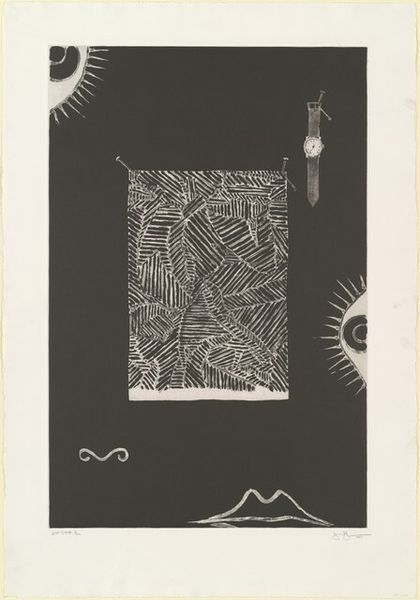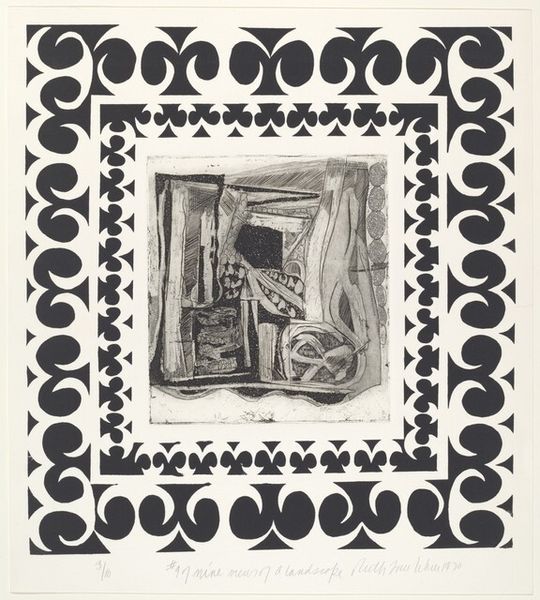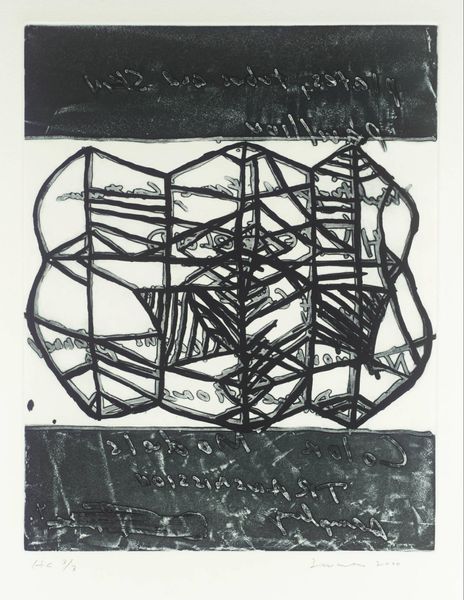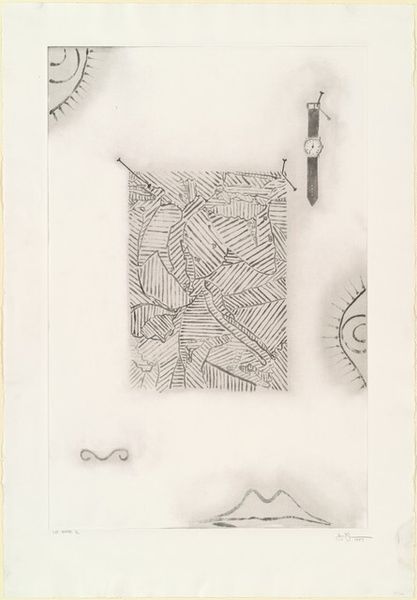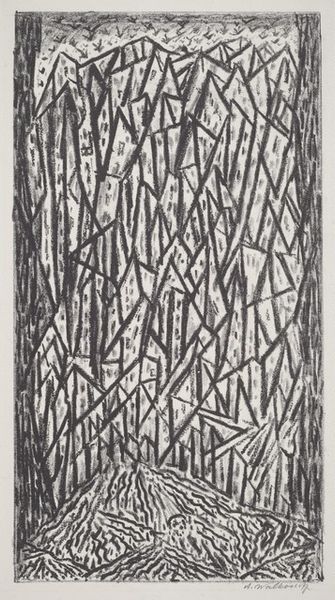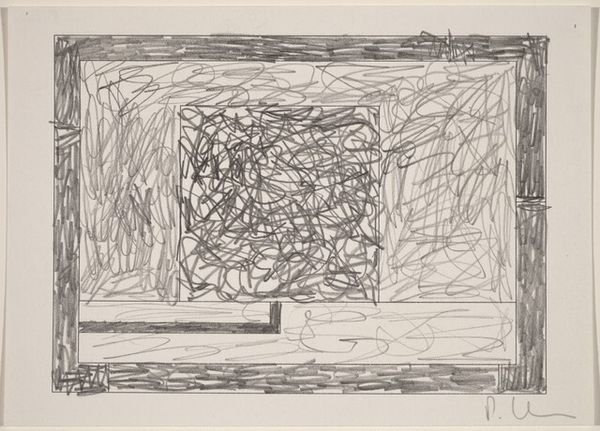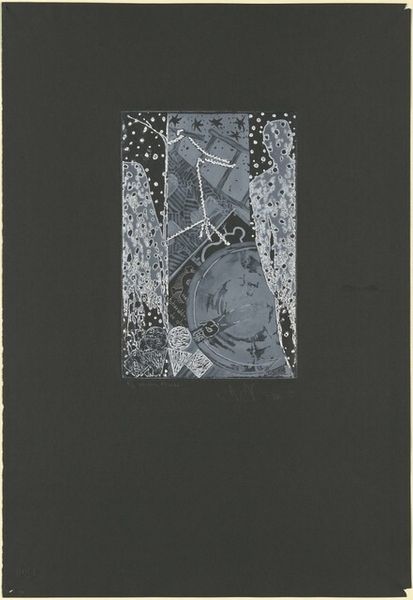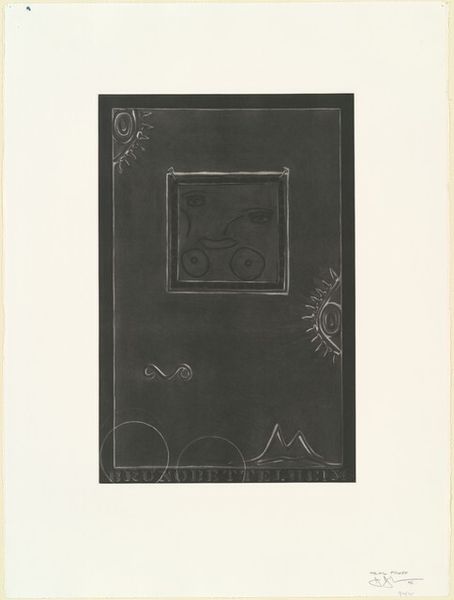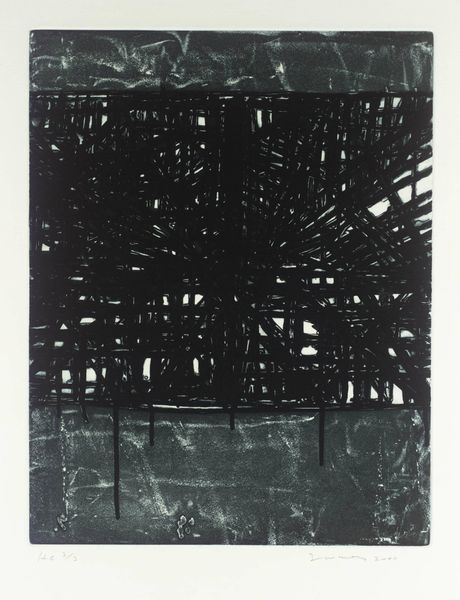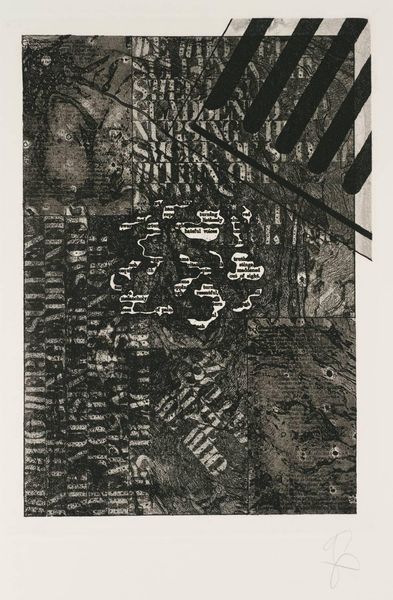![Face with Watch [3rd state (collage and crayon additions)] by Jasper Johns](/_next/image?url=https%3A%2F%2Fd2w8kbdekdi1gv.cloudfront.net%2FeyJidWNrZXQiOiAiYXJ0ZXJhLWltYWdlcy1idWNrZXQiLCAia2V5IjogImFydHdvcmtzLzZmNTI2MzVkLWIyMjYtNGQyZi04ZDg3LWI2OWRlZmRjOWQ2OC82ZjUyNjM1ZC1iMjI2LTRkMmYtOGQ4Ny1iNjlkZWZkYzlkNjhfZnVsbC5qcGciLCAiZWRpdHMiOiB7InJlc2l6ZSI6IHsid2lkdGgiOiAxOTIwLCAiaGVpZ2h0IjogMTkyMCwgImZpdCI6ICJpbnNpZGUifX19&w=1080&q=75)
#
light pencil work
# print
#
pen sketch
#
old engraving style
#
hand drawn type
#
personal sketchbook
#
neo-dada
#
ink drawing experimentation
#
pen-ink sketch
#
pen work
#
sketchbook drawing
#
sketchbook art
Dimensions: plate: 90.17 x 60.33 cm (35 1/2 x 23 3/4 in.) sheet: 104.46 x 73.66 cm (41 1/8 x 29 in.)
Copyright: National Gallery of Art: CC0 1.0
Editor: This is Jasper Johns’ “Face with Watch,” a print from 1996 with collage and crayon additions. I'm really struck by how handmade it feels for a print, almost like looking at a page torn from the artist’s sketchbook. What do you see in this work? Curator: I see a compelling example of Johns' exploration of materiality and process. Note how he uses the traditionally reproduced medium of printmaking, then disrupts it with collage and crayon. He's intentionally blurring the lines between 'high art' and 'craft' through labor-intensive additions. Consider, too, the “face” suggested by the textures – perhaps a reference to the repetitive labor inherent in artistic production? What do you think is the impact of these interventions on the finished artwork? Editor: I think it almost makes it more personal and immediate, even though it's been reproduced. It makes me think about the labour behind mass-produced images, maybe? Curator: Precisely. Johns challenges the idea of the artwork as a singular, precious object. By incorporating mass-produced imagery and techniques, he draws our attention to the social context of artmaking, forcing us to examine the methods of production, and the art object itself. The use of collage elements - look closely at those textures - brings ideas of production further to the front, inviting further labor and thought from the viewer. Editor: That’s fascinating! I never really thought about Johns in that context. Curator: This approach reframes our understanding of artistic value. Instead of focusing solely on aesthetics, we are invited to consider the entire process, from material sourcing to the artist's hand, and even to the act of consumption by the viewer. Editor: So, it's less about the image itself, and more about how it came to be, and who had a hand in its making. Curator: Exactly! Editor: Well, thank you, I have a new appreciation for the layers in what at first looked like a simple print. Curator: And I'm reminded how even established artistic processes can invite opportunities for intervention and reinterpretation, when placed into dialogue.
Comments
No comments
Be the first to comment and join the conversation on the ultimate creative platform.
